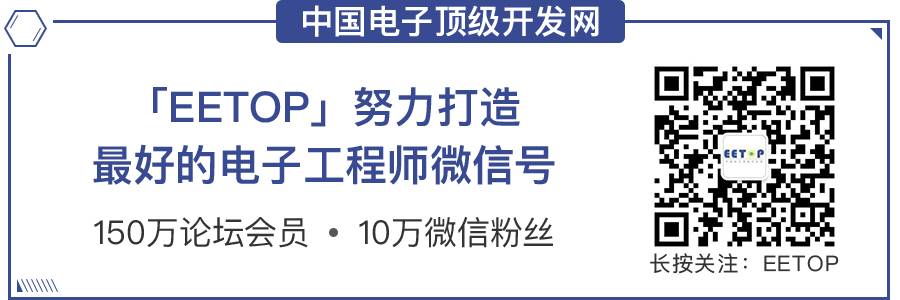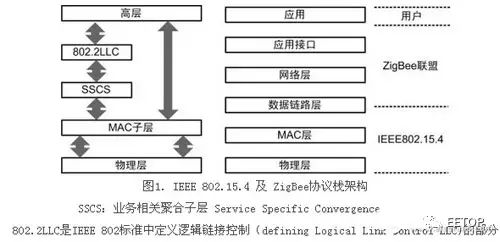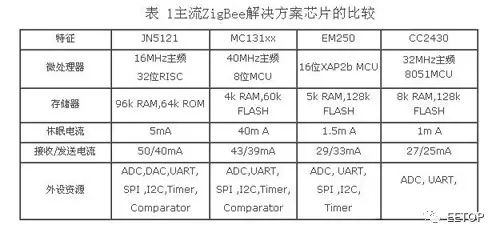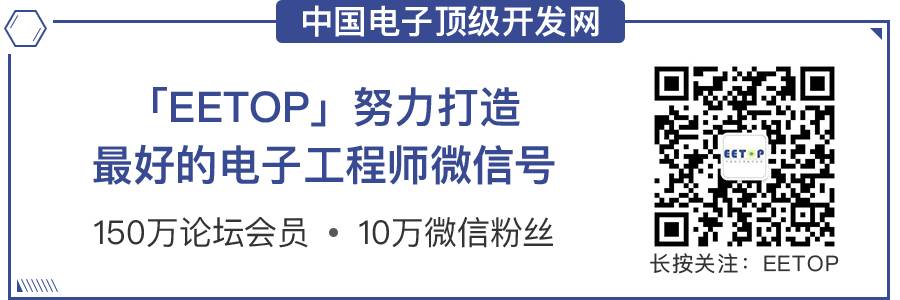
Source: Internet Authors: Xu Yongjun, Zhu Hongsong
The wireless network, as an application-oriented research field, has developed rapidly in recent years. In terms of key technology research and development, academia has conducted extensive research in areas such as network protocols, data fusion, testing and measurement, operating systems, service quality, node positioning, and time synchronization, achieving fruitful results. The industry has also explored applications in environmental monitoring, military target tracking, smart homes, automatic meter reading, lighting control, building health monitoring, and power line monitoring. With the promotion of applications, wireless sensor network technology has begun to expose more and more problems. Devices from different manufacturers need to achieve interconnection while avoiding interference with existing systems. Therefore, it requires different chip manufacturers, solution providers, product suppliers, and related device suppliers to reach a certain level of tacit understanding and work together to achieve the goal. This is the background of the standardization work of wireless sensor networks. In fact, because standardization work relates to the economic interests and even social benefits of multiple parties, it is often given widespread attention by relevant industries. How to coordinate the interests of all parties and reach a consensus requires sufficient understanding and patience from all participants.
So far, the standardization work of wireless sensor networks has attracted widespread attention from many countries and international standard organizations, and a series of drafts and even standard specifications have been completed. Among them, the most famous is the IEEE 802.15.4/Zigbee specification, which has even been regarded as a standard by some researchers and industry professionals. IEEE 802.15.4 defines the physical layer and link layer specifications for short-range wireless communication, while Zigbee defines network interconnection, transmission, and application specifications. Although the IEEE 802.15.4 and Zigbee protocols have been launched for many years, with the promotion of applications and the development of the industry, the basic protocol content can no longer fully meet the needs. Moreover, this protocol only defines the content of network communication and does not propose standard protocol interfaces for sensor components, making it difficult to carry the dreams and missions of wireless sensor network technology. Additionally, when this standard is implemented in different countries, it will inevitably be constrained by the existing standards in those countries. Therefore, people have begun to launch more versions based on the IEEE 802.15.4/Zigbee protocol to adapt to different applications and different countries and regions.
Despite its imperfections, IEEE 802.15.4/Zigbee remains the best combination for the development of wireless sensor network technology in the industry. This article will focus on the IEEE 802.15.4/Zigbee protocol specifications, while also considering other related standards that are of interest to sensor network technology. Of course, the standardization work of wireless sensor networks has a long way to go: first, wireless sensor networks are still an emerging field, and their research and application still appear quite young, with unclear industrial needs; second, IEEE 802.15/Zigbee is not specifically tailored for wireless sensor networks, and some issues need to be further resolved when used in wireless sensor network environments; furthermore, international standardization work specifically targeting wireless sensor network technology has only just begun, and domestic standardization working groups have just been established. Therefore, we need to make adequate preparations for the smooth completion of standardization work.
1. PHY/MAC Layer Standards
The underlying standards for wireless sensor networks generally follow relevant standards from wireless personal area networks (IEEE 802.15). Wireless Personal Area Network (WPAN) emerged earlier than sensor networks and is usually defined as a dedicated wireless short-range network that provides interconnection between personal and consumer electronic devices. WPAN focuses on the bidirectional communication technology issues between portable mobile devices (e.g., personal computers, peripherals, PDAs, mobile phones, digital products, etc.), with a typical coverage range generally within 10 meters. The IEEE 802.15 working group was specifically established to accomplish this mission and has completed a series of relevant standard formulation work, including the widely used underlying standard IEEE 802.15.4 for sensor networks.
(1) IEEE 802.15.4b Specification
The IEEE 802.15.4 standard is primarily aimed at low-rate wireless personal area networks (LR-WPAN). This standard emphasizes low energy consumption, low-rate transmission, and low cost (which aligns with wireless sensor networks), aiming to provide a unified interface for low-rate interconnection between different devices within personal or home ranges. Due to the similarities between the characteristics of the LR-WPAN network defined by IEEE 802.15.4 and the intra-cluster communication of wireless sensor networks, many research institutions regard it as the physical and link layer communication standard for sensor network nodes.
The IEEE 802.15.4 standard defines the physical layer and medium access control sub-layer, in compliance with the Open Systems Interconnection model (OSI). The physical layer includes radio frequency transceivers and lower-level control modules, while the medium access control sub-layer provides a service interface for accessing the physical channel to higher layers. Figure 1 illustrates the relationship between the layers of IEEE 802.15.4 and the protocol architecture of IEEE 802.15.4/Zigbee.

In the physical (PHY) layer design of IEEE 802.15.4, it is oriented towards low cost and higher-level integration requirements, adopting working frequencies of 868MHz, 915MHz, and 2.4GHz. Each frequency band has 1, 10, and 16 usable channels, providing transmission rates of 20kb/s, 40kb/s, and 250kb/s, respectively, with a transmission range of 10 to 100 meters. The three frequency bands used in the specification are defined by the International Telecommunication Union Telecommunication Standardization Sector (ITU-T) for research and medical purposes as ISM (Industrial Scientific and Medical) open bands, widely used by various wireless communication systems. To reduce interference between systems, the protocol specifies the use of Direct Sequence Spread Spectrum (DSSS) coding technology across all frequency bands. Compared to other digital coding methods, DSSS technology simplifies the design of the physical layer’s analog circuit and has higher fault tolerance, making it suitable for low-end system implementation.
In terms of the medium access control layer, IEEE 802.15.4 defines two access modes. The first is Carrier Sense Multiple Access with Collision Avoidance (CSMA/CA). This method references the DCF mode defined in the IEEE 802.11 standard for wireless local area networks (WLAN) and is easy to implement for channel-level coexistence with WLAN. CSMA/CA listens to the medium for co-channel carriers before transmission; if none are present, it indicates the channel is idle, and data transmission begins directly. If carriers are present, it waits for a random backoff period before checking the channel again. This medium access control layer scheme simplifies the process of implementing ad hoc network applications, but it complicates bandwidth utilization in high-traffic transmission applications. Additionally, due to the lack of power management design, more work is required to implement low-power network applications based on sleep mechanisms.
Another communication mode defined by IEEE 802.15.4 is similar to the PCF mode defined in the 802.11 standard, which improves channel utilization through a synchronized superframe mechanism and easily implements low-power control by defining sleep periods within the superframe. The PCF mode defines two types of devices: Full-Function Device (FFD) and Reduced-Function Device (RFD). FFD devices support all 49 basic parameters, while RFD devices only need to support 38 basic parameters at minimum configuration. In the PCF mode, the FFD device acts as the coordinator, controlling the synchronization and data transmission processes of all associated RFD devices, and can communicate with any device in the network. RFD devices can only communicate with their associated FFD devices. In the PCF mode, at least one FFD device serves as the network coordinator (PAN Coordinator), acting as the main controller of the network, responsible for inter-cluster and intra-cluster synchronization, packet forwarding, network establishment, member management, and other tasks.
IEEE 802.15.4 supports star and point-to-point network topologies, with 16-bit and 64-bit address formats. The 64-bit address is a globally unique extended address, while the 16-bit address is used for small network construction or as an identification address for intra-cluster devices. The IEEE 802.15.4b standard has multiple variants, including the low-rate ultra-wideband IEEE 802.15.4a, as well as the IEEE 802.15.4c and IEEE 802.15.4e that China is currently promoting, and the IEEE 802.15.4d primarily promoted by Japan, which will not be discussed in depth here.
(2) Bluetooth Technology
In May 1998, shortly after the establishment of the IEEE 802.15 wireless personal area network working group, five world-renowned IT companies: Ericsson, IBM, Intel, Nokia, and Toshiba jointly announced a research and development plan called “Bluetooth.” In July 1999, the Bluetooth working group released version 1.0 of the Bluetooth protocol, which was updated to version 1.1 in 2001, known as the IEEE 802.15.1 protocol. This protocol aims to design an international standard for a universal wireless air interface (Radio Air Interface) and its software, further integrating communication and computing, allowing portable devices from different manufacturers to communicate within a short range without cables. Once the plan was announced, it received widespread support and adoption from nearly 2,000 manufacturers, including major companies like Motorola, Lucent, Compaq, Siemens, 3Com, TDK, and Microsoft.
Bluetooth technology also operates in the 2.4GHz ISM band, using fast frequency hopping and short packet techniques to reduce co-frequency interference, ensuring the reliability and security of physical layer transmission, and supporting a certain level of networking capability, with real-time voice support at 64Kbps. Bluetooth technology is increasingly popular, with related products continuously increasing in the market. However, with the emergence of ultra-wideband technology, wireless local area networks, and Zigbee technology, especially as issues of security, price, and power consumption become more apparent, its competitive advantages have begun to decline. In 2004, the Bluetooth working group launched version 2.0, tripling the bandwidth and halving power consumption, which somewhat restored confidence in the industry.
Due to the commonalities between Bluetooth technology and Zigbee technology, they are often used in wireless sensor networks.
2. Other Wireless Personal Area Network Standards
To build a complete network from the physical layer to the application layer, wireless sensor networks rely on wireless personal area network standards to pre-establish physical layer and medium access control layer specifications. In addition to the IEEE 802.15.4 and Bluetooth technology discussed earlier, wireless personal area network technology solutions also include ultra-wideband (UWB) technology, infrared (IrDA) technology, and HomeRF technology, all of which share characteristics of short range, low power consumption, low cost, and personal use. They are all used in different application scenarios as underlying protocol solutions for wireless sensor networks, briefly introduced as follows:
(1) Ultra Wide-Band (UWB) Technology
Ultra Wide-Band (UWB) technology originated in the late 1950s and is a technology that uses broadband radio wave signals ranging from a few Hz to several GHz. By emitting extremely short pulses and receiving and analyzing the reflected signals, information about the detected object can be obtained. UWB has very high bandwidth, resulting in a very flat power spectral density, meaning that its output power at any frequency point is very low, even below the noise radiated by ordinary devices, providing excellent anti-interference and safety. UWB technology was initially used mainly as military technology in radar detection and positioning applications. The FCC (Federal Communications Commission) in the United States allowed this technology to enter the civilian sector in February 2002. In addition to low power consumption, UWB technology can easily achieve transmission rates exceeding 100Mbps, with second-generation products expected to reach over 500Mbps, making it unmatched by many other technologies. The competition surrounding UWB standards has been fierce from the beginning, with Freescale’s DS-UWB and TI’s MBOA gradually emerging as the frontrunners, and research in this area has become very popular in recent years in China.
Due to its low power consumption, high bandwidth, and strong anti-interference capabilities, UWB technology undoubtedly has a bright development prospect. However, UWB chip products have yet to hit the market, which is a significant regret. Recently, reports of related products have started to appear, but this deeply rooted technology still requires the joint efforts of the entire industry. Currently, UWB technology is just beginning to show its potential, and it is believed that it will play a significant role in wireless sensor network applications.
(2) Infrared (IrDA) Technology
Infrared technology is a point-to-point communication technology that uses infrared rays, promoted by the non-profit organization Infrared Data Association (IrDA), established in 1993, which aims to establish a world standard for wireless propagation connections and currently has over 130 formal corporate members. The transmission rate of infrared technology has increased from the initial FIR of 4Mbps to the current VFIR of 16Mbps, and the reception angle has expanded from the initial 30° to 120°. Because it is only used for point-to-point communication and has a certain directionality, data transmission is less prone to interference. Due to its small product size, low cost, low power consumption, and lack of frequency application requirements, infrared technology has been widely used since its inception and can be considered an evergreen tree in the field of wireless personal area networks. After years of development, its hardware and supporting software technology have become quite mature, and currently, at least 50 million devices worldwide use IrDA technology, with a growth rate of 50% per year. Today, 95% of laptops are equipped with IrDA interfaces, and remote control devices (televisions, air conditioners, digital products, etc.) commonly use infrared technology.
However, IrDA is a line-of-sight transmission technology, and the core component, the infrared LED, is not very durable, making it impossible to build a stable network that can operate continuously over long periods. This ultimately prevented infrared technology from becoming the physical layer standard technology for wireless personal area networks, and it has only been attempted in a few wireless sensor network applications (such as positioning and tracking) in conjunction with other wireless technologies.
(3) HomeRF Technology
The Home Radio Frequency Working Group (HomeRF WG) was established in March 1998, led by the American HomeRF Working Group, with initial members including Intel, IBM, Compaq, 3Com, Philips, Microsoft, and Motorola. Its purpose is to build interoperable voice and data networks in households at a cost that consumers can afford. In 1998, the HomeRF Working Group developed the Shared Wireless Access Protocol (SWAP), which is primarily aimed at home wireless local area networks. The protocol uses a simplified IEEE 802.11 protocol standard for data communication, following Ethernet Carrier Sense Multiple Access/Collision Detection (CSMA/CD) technology; its voice communication uses the DECT (Digital Enhanced Cordless Telephony) standard, employing Time Division Multiple Access (TDMA) technology. The HomeRF working frequency band is 2.4GHz, initially supporting a maximum data transmission rate of 2Mbps for data and audio. In the new HomeRF 2.x standard, Wide Band Frequency Hopping (WBFH) technology has been adopted, increasing the hopping modulation function, with peak data bandwidth reaching 10Mbps, which can meet most applications.
By around 2000, the popularity of HomeRF technology reached 45%, but due to the technology standards being controlled by dozens of companies and not being as open as infrared technology, especially with the emergence of the 802.11b standard, the popularity of HomeRF suddenly dropped to 30% starting in 2001. In 2003, the HomeRF Working Group announced the cessation of research and promotion, and the once-prominent HomeRF finally exited the historical stage of wireless personal area networks, akin to a fleeting moment.
3. Routing and High-Level Standards
Based on the underlying standards discussed earlier, some high-level protocol standards that include routing and application layers have emerged, primarily including Zigbee/IEEE 802.15.4, 6LowPAN, and IEEE 1451.5 (Wireless Sensor Communication Interface Standard). Additionally, the Z-Wave alliance and Cypress (Wireless USB sensor networks) have also introduced similar standards. However, until a standard specifically designed for wireless sensor networks is developed, Zigbee is undoubtedly the most favored and has received considerable acclaim from many application vendors, which will be briefly introduced here.
(1) Zigbee Protocol Specification
The Zigbee Alliance was established in August 2001, with initial members including Honeywell, Invensys, Mitsubishi, Motorola, and Philips, currently boasting over 200 members. Zigbee 1.0 (Revision 7) specifications were officially launched in December 2004, followed by Zigbee 2006 (Revision 13) in December 2006, known as version 1.1, and then Zigbee 2007 Pro was released in 2007, with further updates in the spring of 2008. Zigbee technology boasts low power consumption, low cost, large network capacity, short latency, reliability, and flexible operating frequency bands, making it a widely regarded solution for wireless personal area networks and often considered the de facto standard for wireless sensor networks.
The Zigbee Alliance has standardized the network layer protocol and application programming interfaces (APIs). The Zigbee protocol stack architecture is based on the seven-layer model of the Open Systems Interconnection model, incorporating the IEEE 802.15.4 standard as well as network layer and application layer protocols independently defined by the alliance. The network layer defined by Zigbee is mainly responsible for building and maintaining the network topology, as well as device addressing, routing, etc., which falls within the general functions of a network layer. The application layer includes the Application Support Sub-layer (APS), Zigbee Device Object (ZDO), and application components customized by device manufacturers, responsible for aggregating business data flows, device discovery, service discovery, security, and authentication.
Additionally, the Zigbee Alliance is also responsible for defining interoperability testing and certification specifications for Zigbee products. The Zigbee Alliance regularly holds ZigFest events, providing manufacturers developing Zigbee products with a public exchange opportunity to complete interoperability testing; in terms of certification, the Zigbee Alliance defines three levels of certification: Level 1 certifies the physical layer and medium access control layer, which is most directly related to chip manufacturers; Level 2 certifies the Zigbee protocol stack, also known as the Compliant Platform Certification; Level 3 certifies Zigbee products, and only products that pass Level 3 certification are allowed to bear the Zigbee logo, hence also referred to as Zigbee logo certification.
Protocol chips are the carriers of protocol standards and are also the easiest form to reflect intellectual property. Currently, many Zigbee chip products and solutions are available in the market, with representative examples including Jennic’s JN5121/JN5139, Chipcon’s CC2430/CC2431 (acquired by TI), Freescale’s MC13192, and Ember’s EM250 Zigbee series development tools and chips, with Table 1 comparing the specifications of these chips.

(2) IEEE 1451.5 Standard
In addition to the two general specifications mentioned above, specific industry-specific standards are also being formulated in various application fields of wireless sensor networks, such as power hydraulics, industrial control, consumer electronics, smart homes, etc. Here, we will briefly discuss IEEE 1451.X in the industrial control field. Of course, industrial standards are complex and diverse. Recently, a wireless technology standard specifically targeting industrial automation applications, ISA SP100, has been developed, with many Chinese industrial and academic colleagues actively participating in the formulation of this standard.
The IEEE 1451 standard family defines a set of universal communication interfaces to enable industrial transmitters (sensors + actuators) to be independent of communication networks and connect with existing microprocessor systems, instruments, and fieldbus networks, addressing compatibility issues between different networks, and ultimately achieving interchangeability and interoperability of transmitters with networks. The IEEE 1451 standard family defines the hardware and software interfaces of transmitters, dividing the sensors into two-layer modular structures. The first layer runs network protocols and application hardware, called the Network Capable Application Processor (NCAP); the second layer is the Smart Transducer Interface Module (STIM), which includes the transmitter and the Electronic Data Sheet (TEDS). The IEEE 1451 working group has proposed five standard proposals (IEEE 1451.1—IEEE 1451.5), targeting different industrial application field needs, with IEEE 1451.5 being the wireless sensor communication interface standard.
The IEEE 1451.5 standard proposal was latest introduced in June 2001, proposing an open standard wireless sensor interface under the existing IEEE 1451 framework to meet the needs of various application fields such as industrial automation. IEEE 1451.5 aims to use wireless transmission media as much as possible, describing the wireless connection specifications between intelligent sensors and network adapter modules, rather than between network adapter modules and networks, achieving interoperability between network adapter modules and intelligent sensors via IEEE 802.11, Bluetooth, and Zigbee wireless interfaces. The focus of the IEEE 1451.5 proposal is to establish communication data models and communication control models during wireless data communication. The IEEE 1451.5 proposal suggests that the standard must extend the data model in a general way to allow various wireless communication technologies, mainly including two aspects: one is to define a universal Quality of Service (QoS) mechanism for transmitter communication that can map services to any radio technology, and the other is to have a mapping layer for each wireless radio frequency technology to map specific configuration parameters for wireless transmission to the QoS mechanism. Specific content of this standard will not be discussed further here.
(3) 6LowPan Draft
From its inception, wireless sensor networks have been associated with the next generation of the Internet, and 6LowPan (IPv6 over Low Power Wireless Personal Area Network) is a draft standard that combines these two fields. The goal of this draft is to establish how to transmit IPv6 packets over LowPAN (Low Power Personal Area Networks). The current LowPAN adopts the open protocol primarily referring to the IEEE802.15.4 medium access control layer standard, but there is no truly open standard supporting routing and other functions at the upper layer. Since IPv6 is the standard for the next generation of the Internet and is technically mature, adopting the IPv6 protocol in LowPan can achieve seamless connection with IPv6 networks. Therefore, the Internet Engineering Task Force (IETF) has established a dedicated working group to formulate relevant technical standards for sending and receiving IPv6 packets over the 802.15.4 protocol.
Choosing to transmit IPv6 packets over 802.15.4 is primarily due to the existing mature IPv6 technology meeting many of the requirements for the LowPan interconnection layer. First, many devices in the LowPan network require stateless auto-configuration technology. The IPv6 Neighbor Discovery protocol provides two auto-configuration techniques based on host diversity: stateful and stateless auto-configuration. Additionally, there may be numerous devices within a LowPan network, necessitating a large IP address space, which is not a problem for the IPv6 protocol with its 128-bit addresses. Furthermore, in situations where packet length is limited, the IPv6 address can include the 802.15.4 medium access control layer address.
However, since IPv6 and the 802.15.4 protocol were designed for two completely different networks, there are many technical issues that need to be resolved to support the transmission of IPv6 data packets over IEEE802.15.4. These include packet fragmentation and reassembly, header compression, address configuration, mapping and management, mesh routing forwarding, neighbor discovery, etc., which will not be discussed in detail here.
4. Domestic Standardization and Internationalization
In recent years, the standardization work in the field of wireless sensor networks in China has made significant progress under the promotion of the National Information Technology Standardization Technical Committee (abbreviated as the Standardization Committee). After more than a year of preparation, on November 29, 2005, the Standardization Committee organized domestic and overseas Chinese experts at the China Electronic Technology Standardization Research Institute to hold the first “Wireless Personal Area Network Technology Standard Seminar,” discussing the progress of wireless personal area network standards, market analysis, and standard formulation. The meeting suggested including wireless sensor networks within the scope of wireless personal area networks and establishing a dedicated interest group (along with interest groups for low-rate wireless personal area networks, ultra-wideband, etc.). Since then, the standardization work of wireless sensor networks in China has taken its first step.
Through nearly two years of joint efforts from over thirty domestic research and industrial entities, the working group has organized eight nationwide technical seminars, proposing a dedicated frequency band of 780MHz (779-787 MHz) for low-rate wireless personal area networks and related technical standards, which have received formal approval from the National Radio Administration (Japan uses 950MHz, and the United States uses 915MHz). For this frequency band, the working group proposed a proprietary MPSK modulation coding technology, freeing itself from the patent constraints of similar foreign technologies. On March 3-4, 2008, the working group voted on the opinion letter for “Information Technology: Specific Requirements for Remote Communication and Information Exchange between Systems: Part 15.4: Physical Layer and Media Access Control Layer Specifications for Low Rate Wireless Personal Area Networks (WPAN),” and approved the proposal for the 780MHz working frequency band to adopt MPSK and O-QPSK modulation coding technology as a co-alternative physical layer technical specification for low-rate wireless personal area networks (MPSK and O-QPSK were proposed by Chinese and American organizations, respectively, and each has its own intellectual property rights). This means that LR-WPAN can adopt either MPSK or OQPSK or use both together, ultimately forming the IEEE 802.15.4c standard. Additionally, the IEEE 802.15.4e, which is mainly drafted by Chinese and overseas Chinese experts, is also progressing smoothly (adding support for industrial wireless standards ISA SP-100.11a in the IEEE 802.15.4-2006 medium access control). This is an important progress in domestic standardization work and a significant step for China to participate in the formulation of international standards. The Computing Institute is one of the official members of this working group and has participated in some of its work.
Recently, new developments have emerged in the standardization work of domestic and international wireless sensor networks. First, the National Standardization Committee has officially approved the separation of wireless sensor networks from the wireless personal area network working group, establishing a wireless sensor network standard working group directly under the National Information Technology Standardization Management Committee (with the secretariat currently affiliated with the Micro Systems Institute, and the Computing Institute as one of its member units, committed to standard formulation). The working group is expected to complete its preparatory work around April 10, 2008, marking a significant step forward in the standardization work of sensor networks. Secondly, the International Organization for Standardization has also established the ISO/IEC JTC1/SGSN research group, starting the formulation of international standards related to sensor networks. China, along with the United States, South Korea, Japan, and other countries, is participating as an important member unit. Its first meeting will be grandly held in Shanghai, China, at the end of June 2008. The meeting will not only involve technical discussions on several key issues by domestic and foreign experts in related fields but also feature many companies engaged in sensor network applications showcasing their latest products. Meanwhile, member countries will conduct in-depth discussions on the sensor network standard framework, laying the groundwork for the detailed design of the standard draft.
Standards are the link between research and industry, and chips are the most direct implementation form of standards. Participating in standardization work, especially in the formulation of international standards, plays a crucial role in enhancing the competitiveness and technological level of Chinese products, occupying the high ground in the industry. The ultimate goal of standard formulation is to improve industry levels, meet product internationalization needs, protect independent intellectual property rights, and facilitate compatibility with similar or supporting products. If we can participate in the formulation of domestic and international standards related to wireless sensor networks, we will gain strong guarantees in chip design, solution provision, and product manufacturing in this field. System chips, as the most direct embodiment of standards, will be key components of wireless sensor network application systems, not only determining costs but also embodying intellectual property. The lack of industry standards appears weak and is merely a piece of paper; the absence of chip standard formulation is merely talk without action. However, currently, the level of chip design and industrialization (especially for RF chips) in China is relatively low, with limited capabilities. These are two critical areas that urgently need breakthroughs in the field of wireless sensor networks. Standard formulation and communication chips are currently two indispensable aspects of the sensor network field.
To better facilitate communication and learning, EETOP has formed several WeChat groups by region. We welcome netizens in respective regions to join their regional groups. The method to join is: First add jack_eetop as a friend, then send the following information:Join Group + Region + Organization (or Institution) + Profession. If you are joining a province-based group, please send the joining information in the following format: Join Group + Province Name + City Name + Organization (or Institution) + Profession
For example: Join Group + Beijing + Lida Technology + Digital IC Design
Join Group + Zhejiang + Hangzhou + XXX Company + XXX Design
Currently, we have opened the following 7 regional groups, welcome to join.
Long press the QR code, add the group leader as a friend, and they will pull you into the group

EETOP Beijing Group EETOP Suzhou Group
EETOP Shanghai Group EETOP Shenzhen Group
EETOP Chengdu Group EETOP Xi’an Group
EETOP Zhejiang Group
In addition, we will also gradually open some industry groups, currently open EETOP Automotive Electronics Group and welcome industry insiders to join
Please fill in the following format: Join Group + Automotive + Organization
To prevent robot entries, please be sure to greet upon first entry!
 Click to read the original text for more
Click to read the original text for more